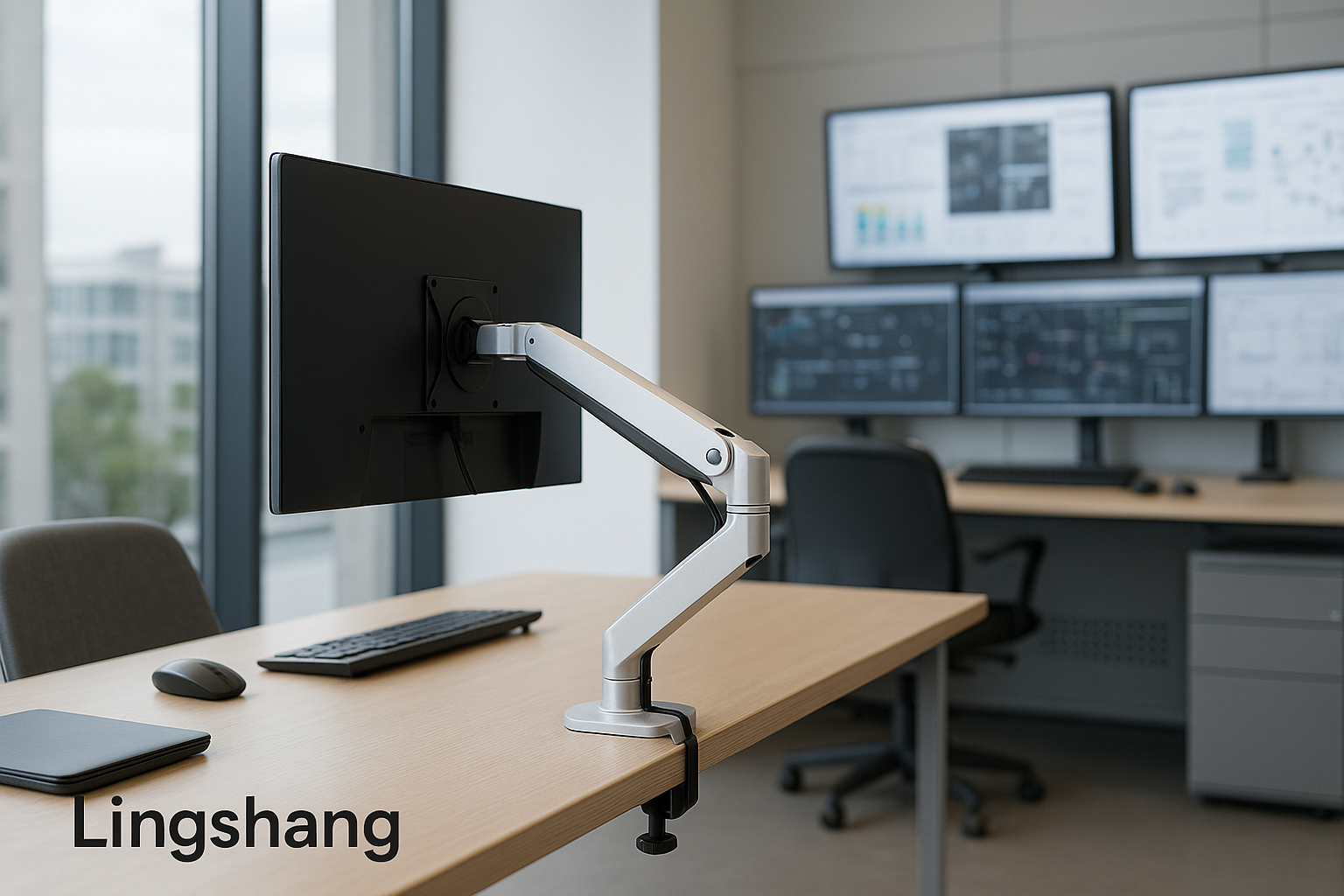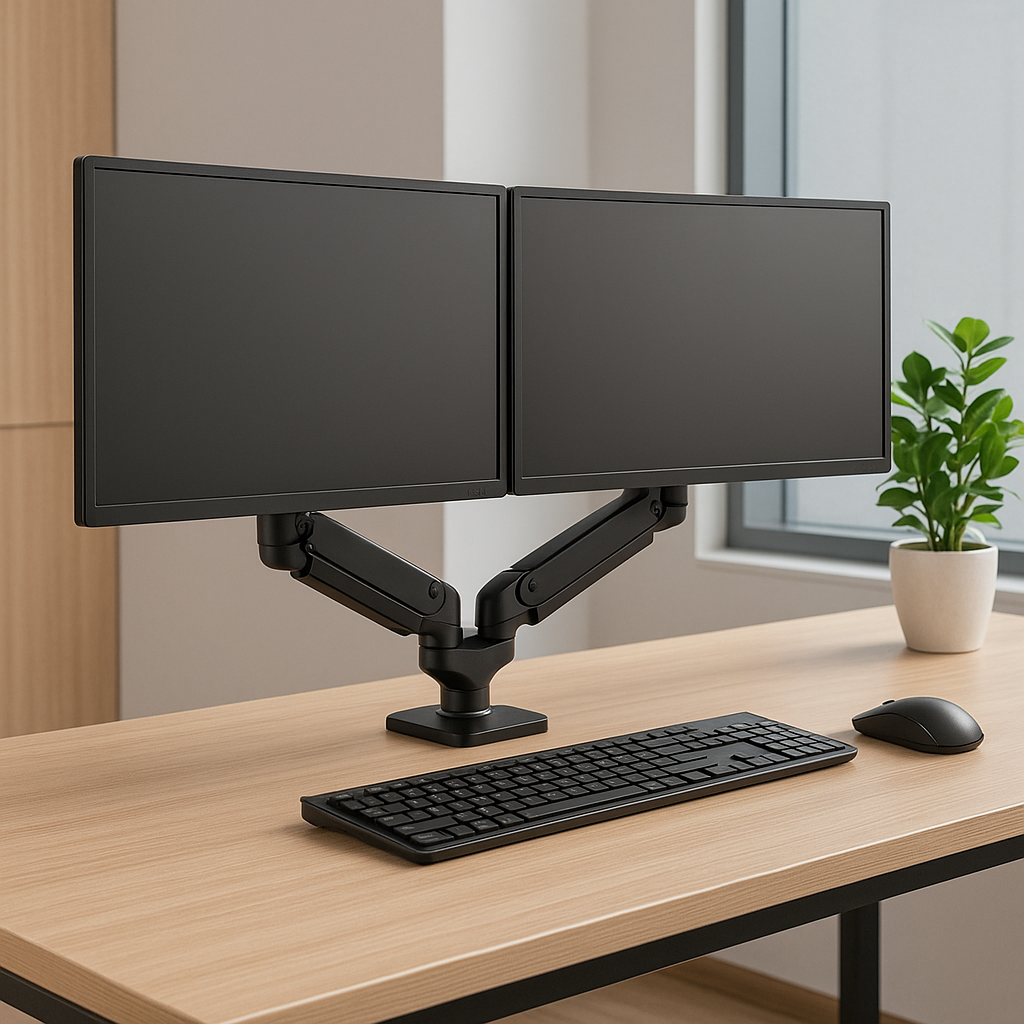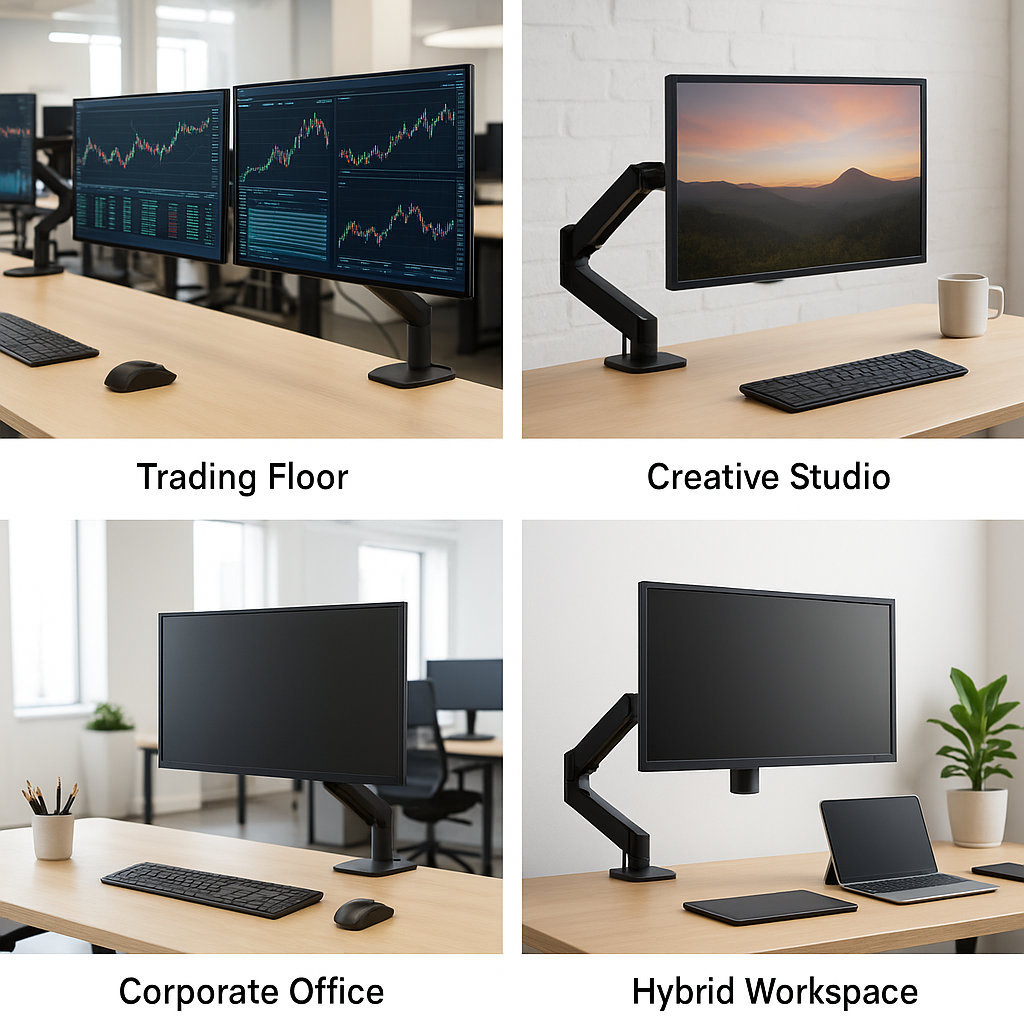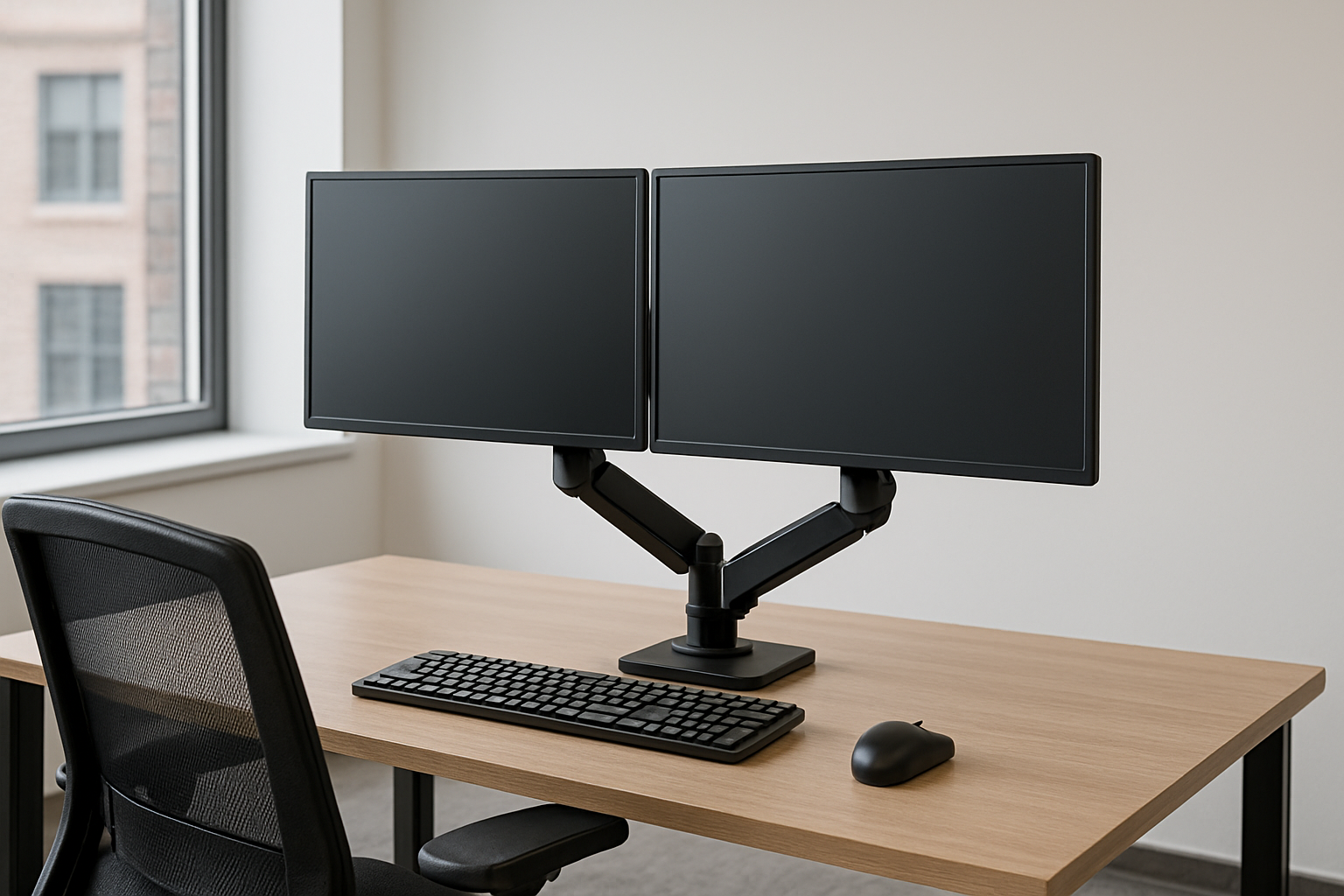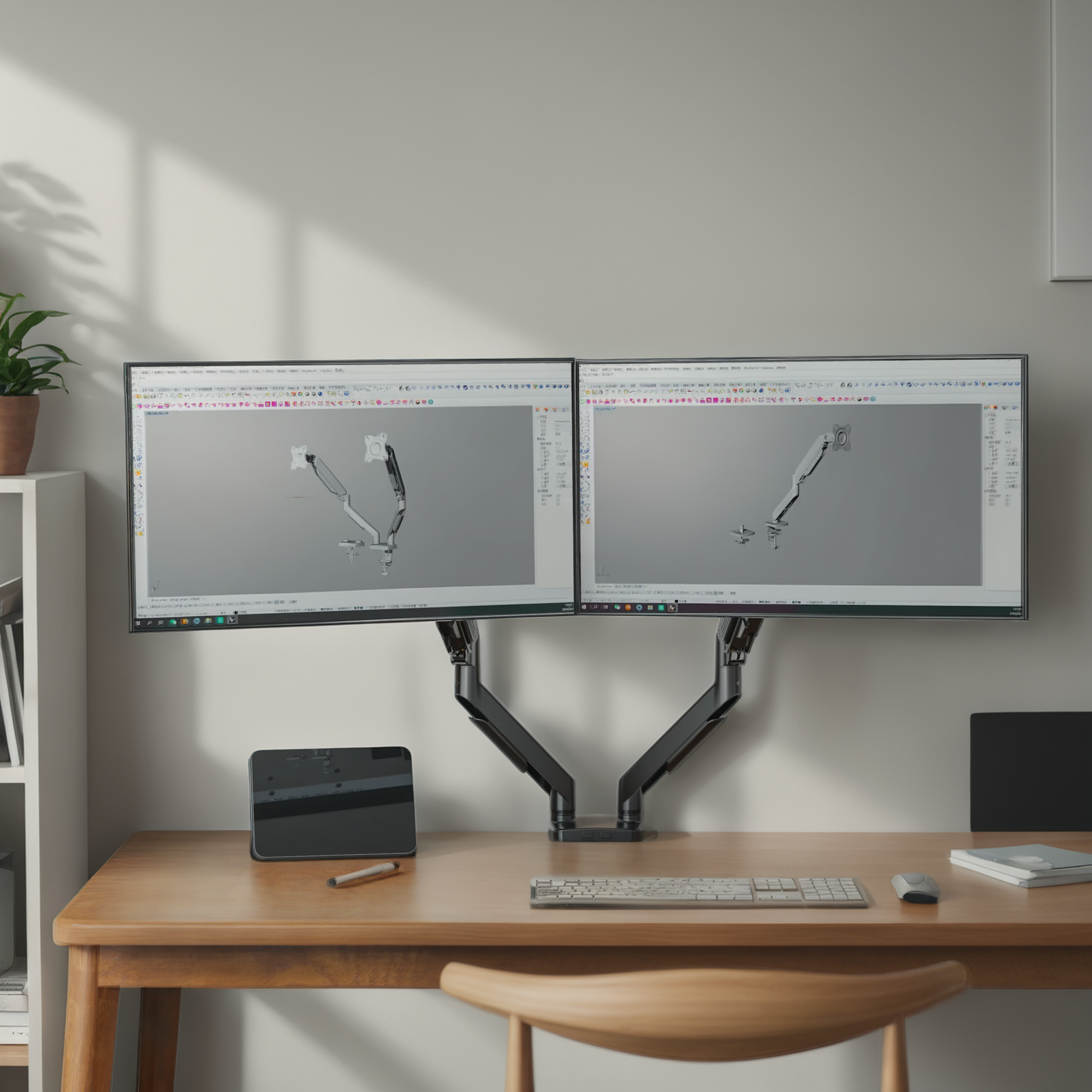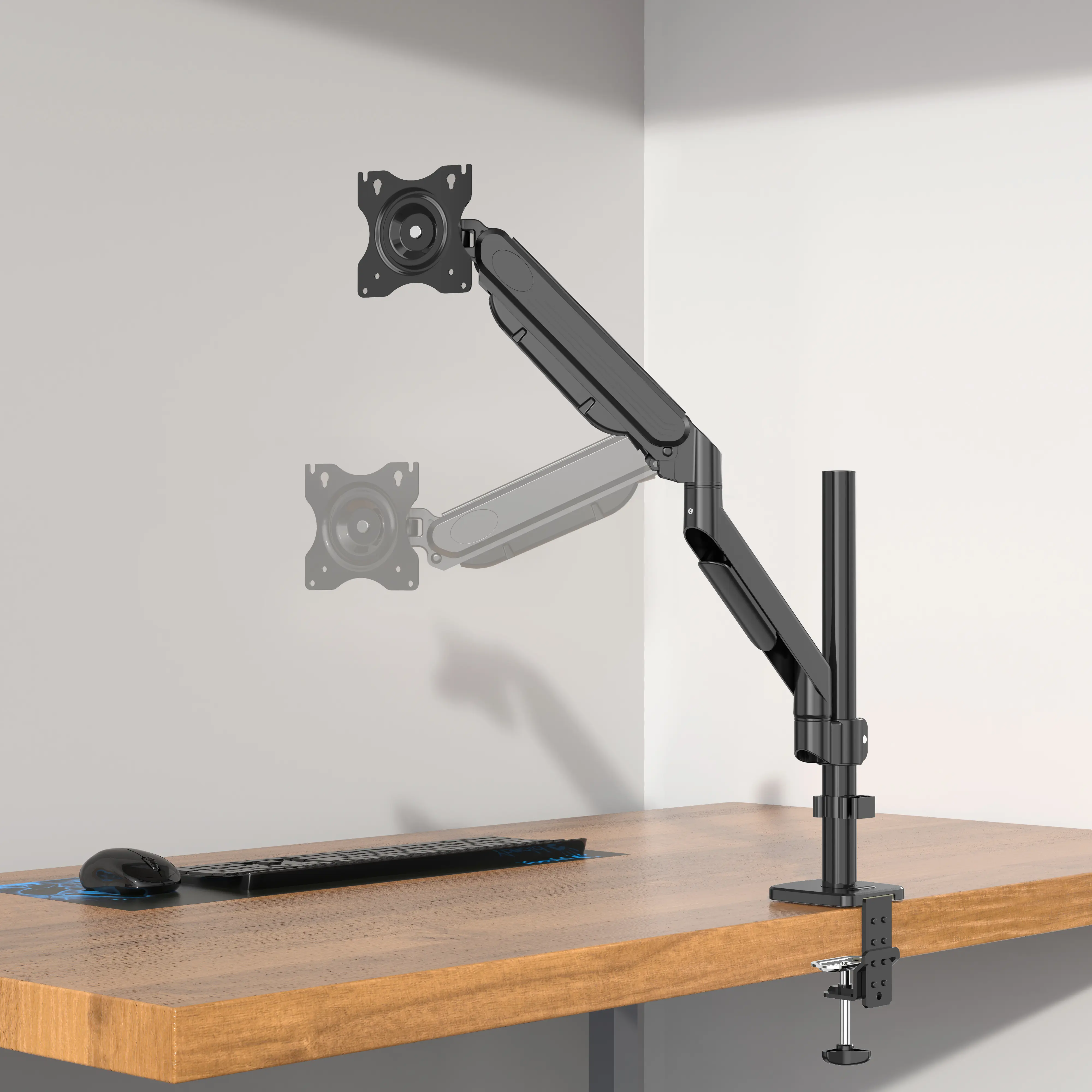
Why IT Teams Are Standardizing Monitor Arms in Every Office
As workplaces grow more flexible and technology-driven, IT departments face increasing pressure to buildworkstations that are not only functional, but also ergonomic, scalable, and easy to maintain. A common bottleneck? The humble monitor setup.
The Real Pain Points Behind Disorganized Monitor Setups
Inconsistent monitor setups across desks lead to:
-
Unstable or wobbly screenscausing user frustration
-
Neck and shoulder painfrom poorly positioned monitors
-
Time-consuming adjustmentsduring onboarding or desk moves
-
More frequent support ticketsfor height, angle, or cable issues
For IT teams, every non-standard setup translates into more hands-on support, more cluttered desks, and less user satisfaction.
💡A 2024study in the Journal of Occupational Health found that monitor arms reduce musculoskeletal complaints by up to 53% when paired with adjustable chairs and desks.
Context: A Day in the Life of an IT Department
Imagine an IT manager onboarding 10 new employees. Each desk has a different monitor stand, with inconsistent height and tilt ranges. The result?
-
Multiple adjustment requests
-
Complaints about discomfort within the first week
-
Lost productivity while troubleshooting physical setups
Now scale that to 100 desks. The inefficiency becomes a serious cost factor.
A Scalable Solution: Why Monitor Arms Work So Well
By standardizing monitor arms across all workstations, IT teams unlock several benefits:
-
Universal compatibility: One solution fits all major screen brands and sizes
-
Rapid deployment: Easy to install, adjust, and maintain
-
Improved cable management: Reduces mess and technical issues
-
Better posture: Encourages healthy viewing angles and reduces physical strain
With one standard, IT teamsstreamline their support processand reduce the margin for error.
Data-Driven Ergonomic Gains
-
According to the Occupational Safety and Health Administration (OSHA),monitors should be at eye level and directly in front of the userto reduce eye and neck strain.
-
A report by Steelcase notes thatpoor posture due to fixed monitor positions is a leading contributor to work-related fatigue.
-
Lingshang’s adjustable monitor arms address these exact needs withfull articulation, tilt, rotation, and height adjustments, tailored to user preferences.
How It Helps Different Roles
-
Software Developers: Benefit from precise screen alignment for code comparison
-
Designers: Gain flexibility with dual-monitor arms for multitasking
-
Data Analysts: Easily rotate and position screens for cross-referencing dashboards
-
HR/Operations: Faster equipment rollout during hiring surges
In all cases, thestandard monitor arm systemsimplifies onboarding and boosts comfort.
Why lingshang Is the Partner of Choice for IT Deployments
Lingshang offers:
-
Robust hardware built for daily commercial use
-
OEM/ODM customizationfor branded or bulk-order needs
-
Installation supportand detailed guides for IT teams
-
Fast global shipping and responsive after-sales service
Whether it's 5 desks or 500, our monitor arms are designed to supportscalable, ergonomic, and cost-efficient IT strategies.
Make Your IT Setup Work Smarter, Not Harder
Standardizing monitor arms is more than a hardware choice—it's a strategic move toward long-term workplace efficiency, health, and simplicity. It eliminates guesswork, reduces support overhead, and helps every team member perform better.
Explore our full catalog and workspace solutions on ourhomepage.
Need to discuss your team’s specific needs? Reach out via ourContact Us pagefor tailored solutions and volume pricing.

